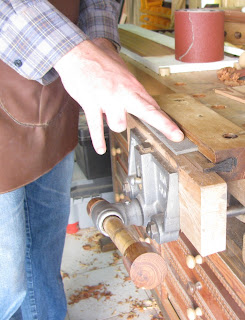After a stalled few weeks of Tree House building due to Woodworking in America and Hurricane Sandy, I managed to get back out to work last week.
After cutting all the T1-11 sheathing/siding to length, I managed to get 2-1/2 walls hung. Hopefully next weekend Ill get to finish closing in the envelope.
After cutting all the T1-11 sheathing/siding to length, I managed to get 2-1/2 walls hung. Hopefully next weekend Ill get to finish closing in the envelope.













































 I started from a 32 mm
I started from a 32 mm






